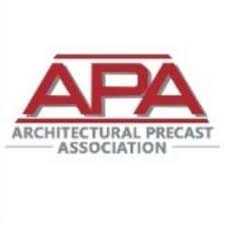The Architectural Precast Concrete and Cast Stone provided by Steps Plus, Inc. is a essentially a maintenance free product, however a few items should be kept in mind.
Avoid Impacts: Care should be taken to protect it from impacts as it can be chipped, especially at corners and edges. Skateboarders, skaters, or bikers ‘grinding’ along coping or bouncing down steps may cause this type of damage. Handcarts pushed up or down precast or cast stone steps may cause chips. If chips do occur, patch kits can be purchased from Steps Plus, Inc.
Do Not Expose Concrete Products to Chemicals (Salt & Other Deicers, Fertilizers): In winter, precast concrete steps, stair treads, and sidewalks should be shoveled or swept to be kept free of snow. Sand may be applied to add traction. Salt and other ice melting chemicals (deicers) should not be used on our products since they will cause spalling and pop-outs. The use of any deicing compound, even if it is not chemically reactive with concrete, can cause spalling and pop-outs by subjecting the concrete to many more freezing and thawing cycles than would occur naturally. Even deicers that come in containers that state the material will not harm concrete may cause damage by creating an abnormal amount of freeze-thaw cycles. Contact with lawn fertilizers should be avoided since they can discolor and damage concrete. New concrete less than a year old is especially susceptible to chemical damage and could be affected with just one application of deicer or fertilizer.
If exposure to any type of chemical is likely, then the user should apply some type of concrete sealer made for protecting concrete from the effects of those chemicals. A sealer may prevent or reduce the amount of damage that occurs from the use of deicers and help prevent staining from lawn fertilizers. However, sealers may change the appearance of our product and will prevent future patches from sticking. Even with a concrete sealer applied, deicer use should be kept to a minimum and any deicer residue left on the concrete should be immediately shoveled or swept off the concrete once the ice has melted. When shoveling, sweeping, plowing, or snow blowing deicer contaminated snow, do not throw it so that it lands on or against any precast concrete or cast stone (such as site wall copings or base trim) as this could lead to spalling of those items.
Since most sealers wear off over time, they need to be reapplied periodically. Damage caused by exposure to chemicals such as fertilizers, salt, or other ice melting compounds is not covered under Steps Plus, Inc.’s limited warranty, regardless of whether or not a sealer was applied.
Protect from Extreme Heat: Exposure to extreme heat may cause damage. Using a torch to melt ice or welding against concrete may cause aggregates to pop.
Care of Rail and Fence Post Penetrations in Concrete: The holes around rail and fence posts that go into precast concrete or cast stone should be kept filled with the appropriate anchoring cement or sealant. Failure to do this may allow water into the holes which could freeze in the winter and cause the concrete to crack. Moisture in the holes could also lead to rusting of the rail or fence posts. Rail and fence posts that go into precast concrete or cast stone should not be allowed to rust since metal expands as it rusts which could cause the surrounding concrete to crack.
Cleaning: Should the precast concrete or cast stone become dirty, it can be scrubbed with a fiber brush, using a mild detergent and water and then thoroughly rinsed with clean running water. Before cleaning, thoroughly drench all surrounding masonry and concrete to prevent the dirty washdown water from being absorbed into it. No acids or prepared cleaners should be used without the approval of Steps Plus.


